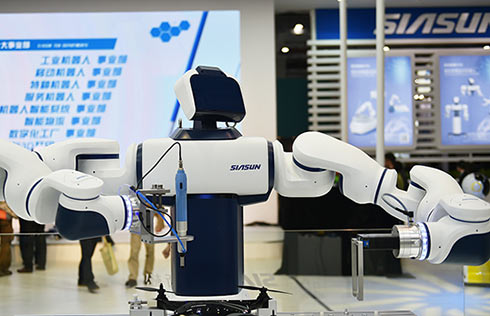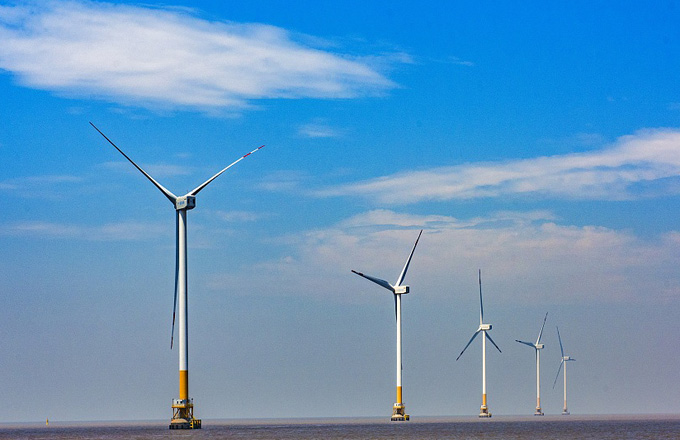China-built railway gives new lease of life to East Coast of Peninsula Malaysia
KUALA LUMPUR - Though rail infrastructure has always played an important role in a country's economic development, unfortunately, it is nowhere to be seen in the scenic East Coast region of Peninsula Malaysia.
This is set to be changed by the 688-km East Coast Rail Link (ECRL). After longing for years, residents in Malaysian state of Kelantan, Terengganu, Pahang on the East Coast region can soon see the first train running from the country's northern border with Thailand to Malaysia's busiest Port Klang on the Strait of Malacca, connecting the East Coast to the more developed region centered on the capital of Kuala Lumpur.
Jointly launched by Malaysian Prime Minister Najib Razak and Chinese State Councilor Wang Yong earlier this month, the railway will be built by China Communications Construction Company Ltd, a leading transportation infrastructure group that also built a landmark bridge in the country's northwestern state of Penang.
New economic spur
Analysts and business communities see the 55-billion ringgit ($13 billion) mega project as a new spur to the region's economy.
"The immediate economic growth is fairly positive," said Standard Chartered Bank's ASEAN economic research head Edward Lee.
In the short term, Chinese contractors may put forward competition in Malaysia's construction sector, but this may raise the overall productivity in the long run, he said.
Furthermore, Chinese companies have the technology and management know-how on infrastructure projects as they have rich experience handling projects locally and overseas, he said.
The ECRL will be an electric railway line crossing Kelantan, Terengganu, Pahang and Selangor states. It will accommodate passenger trains at a maximum speed of 160 km per hour and goods trains at a maximum speed of 80 km per hour. Construction of the rail link is expected to be completed by 2024.
The Malaysian government has estimated that ECRL will contribute an additional 1.5 percent of gross domestic product (GDP) growth annually in the East Coast region over the next 50 years.
Local benefits
Construction firms are the immediate beneficiary of the mega project, prompting analysts to upgrade the outlook of the sector. Local contractors and engineering consulting firms are expected to benefit from the subcontracts totaling 16.5 billion ringgit.
"The construction of ECRL will spur construction GDP growth between 2018 and 2024. The multiplier effect will also support overall GDP growth," Affin Hwang Capital Research analyst Loong Chee Wei told Xinhua, adding that building material suppliers will also be benefited.
Last week, BMI Research of Fitch Group has upgraded its five-year forecast for Malaysia's construction industry annual growth to 6.3 percent.
Currently, Malaysia has more than 83 on-going construction projects worth $100 billion. Rail projects account 19 percent of the total value.
IJM Corp, one of Malaysia's leading construction companies, sees the building of ECRL timely with the ongoing expansion of Kuantan Port on the East Coast to be connected to the ECRL.
The development of Malaysia-China Kuantan Industrial Park (MCKIP), a flagship cooperation between Malaysia and China, will also be boosted.
"ECRL would link all the key economic and industrial areas with the East Coast Economic Region such as the Malaysia-China Kuantan Industrial Park," said IJM Corp's chief executive officer and managing director Soam Heng Choon in an email to Xinhua.
Currently, the group and its Chinese partner Guangxi Beibu Gulf Group aims to double the capacity of the Kuantan port to 52 million in handling freight weight tons upon completion of its upgrading plan.
Soam said the railway can shorten the time and cost of shipping from East Coast region to ports in China.
The rail link is set to shorten the travelling time between East and West, from seven to 12 hours to less than four hours.
Meanwhile, WZ Satu's executive chairman and chief executive officer Uzir Bin Ubaidullah believed that the improvement of transport infrastructure will spur the economic activities in the area, and eventually enhance property values in the region.
"Inter-connectivity is the greatest advantage provided by ECRL," the Kuantan-born entrepreneur told Xinhua over the phone.
- Chinese investment expected to boost Malaysian construction industry
- Belt and Road Initiative, a game changer for the regional economy: Malaysian PM
- Chinese-built mega railway begins construction in Malaysia
- Chinese companies tap into Malaysia's Islamic finance market
- Malaysia sees more tourist arrivals from China

























